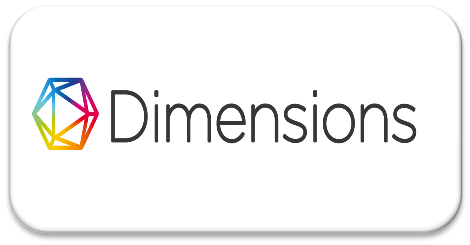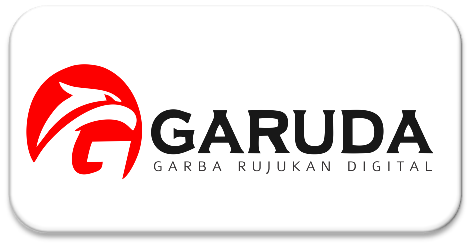The Effect of AC (alternating current) and DC (direct current) on Bend Testing Results of Low Carbon Steel Welding Joints
Abstract
The purpose of this study was to determine the effect of alternating current (AC) and direct current (DC) on the bend testing results of low carbon steel welding joints. The results of this study are expected to determine the cracks that occur from the root bend and face bend testings in the AC and DC welding process. This study used experimental method, where the research was done by giving AC and direct polarity DC (DC-) SMAW welding treatments. The material used in this research was low carbon steel plate DIN 17100 Grade ST 44, thickness 10 with E7016 electrode type. The process of welding joints used a single V seam, strong current of 90A, and the welding position of 1G. The testing of welding joints was carried out by bend testing using the standard acceptance of AWS D1.1 root bend and face bend testing results. The results of the bend testing showed that the AC welding root bend test specimen held no cracks while the DC welding root bend test held cracks with incompelete penetration and open crack defects. On the contrary, the AC welding face bend test had open crack defects and in the DC welding face bend test was found a crack. Thus, there was a difference in the crack resistance of the welding joint from the types of current used through the root bend test and face bend test. Therefore, it can be summarized that AC welding is better for root welding and DC welding is good for capping welding.
References
B.V.M.Engineering College, V.V. Nagar, Anand,Gujarat. Review for Design of Gripper in Universal Testing Machine.International Journal for Scientific Research & Development.2016; Vol 4(1).
Munawar et al. The Effects of Shielded Metal Arc Welding (SMAW) Welding On TheMechanical Characteristics With Heating Treatment inn S45c Steel. Journal of Physics: Conference Series. 2018. doi :10.1088/1742-6596/962/1/012063.
Bodude, MA., Momohjimoh, I., Studies on Effects of Welding Parameters on the Mechanical Properties of Welded Low-Carbon Steel. Journal of Minerals and Materials Characterization and Engineering. 2015; Vol 3: 142-53.
Hendri, N.,Yolli, F., Meisuri, H.Analysis of Tensile Strength the Fiber Bagasse Particles Board with Resin Adhesives. Teknomekanik.2018; Vol.1(1): 1-5. https://doi.org/10.24036/tm.v1i1.172
Harsono Wiryosumarto, T. O. Teknologi Pengelasan Logam. Jakarta: Pratya Pramita. 2008.
Despa Wandri., Purwantono., Pengaruh Arus AC dan DC terhadap Hasil Pengelasan pada Las Busur Listrik. Jurnal Pendidikan Teknik Mesin. 2016 : 1-7.
Arifin. Las Litrik dan Otogen. Jakarta: Ghalia Indonesia; 1997
Daryanto. Teknik Las. Bandung: Alfabeta; 2014
Jeffus, L. Welding and Metal Fabrication. United States of America: Cengage Learning; 2012.
Widharto, S., Welding Inspection. Jakarta: Mitra Wacana Media; 2013.
Devendra Yadav & Abhishek Gaikwad. Comparison And Testing Of Tensile Strength For Low & Medium Carbon Steel. International Journal of Mechanical Engineering (IJME). 2015;Vol.4(5) : 1-8.
Wari, A., Nurdin, H., & Ya, K. Porosity Defect Analysis in ST 37 Steel Welding Joints Using the Dye Penetrant Method. Teknomekanik. 2020; Vol (1) : 1-8. https://doi.org/10.24036/tm.v3i1.5272
M. Agung P., Jasman, Nelvi, E., Yolli, F. The Variation Effectof Electric Current Toward Tensile Strength on Low Carbon Steel Welding with Electrode E7018. Teknomekanik. 2020; Vol.3(1) : 9-17.https://doi.org/10.24036/tm.v3i1.5572
Odebiyi, O.S., Adedayo, S.M., Tunji, L.A., Onuorah, M.O., A Review of Weldability of Carbon Steel in Arc-Based Welding Processes. Cogent Engineering. 2019; 6 (1) : 1-32.
M. U. Deshpande, J. M. Kshirsagar, Dr. H. M. Dharmadhikari. Optimization of GMAW Process Parameters to Improve the Length of Penetration in EN 10025 S 235 Grade. Journal of Welding and Joining. Vol.32 (1)..
Hendronursito Y, Isnugroho K, Birawidha DC, Amin M. Analysis Of Shielded Metal Arc Welding (SMAW)On HighManganese Steel Hammer-mill Crushe. Journal of Mechanical Engineering. 2019; Vol.16 (2).
Ameen A. Nassar, Rafil M. Lefta and Muthanna J. Abdulsada. Experimental Study of The Effect of Welding Electrode Types on Tensile Properties of Low Carbon Steel Aisi1010. Kufa Journal of Engineering.2018; Vol. 9(4) : 163-173.
Dadi, A., Goyal, P.B., Patel, M.H., A Review Paper on Optimization of Shielded Metal Arc Welding Parameters for Welding of (Ms) Sa-516 Gr.70 Plate by Using Taguchi Approach. International Journal of Scientific Research in Science and Technology. Vol 4(5): 1536-43. 2018.
Wibowo, H., Surahmanto, F., Peningkatan Kekuatan Mekanis dan Ketahanan Retak Las pada Sambungan Las Busur Elektroda Terbungkus Melalui Pemanasan awal pada Elektroda. Prosiding Seminar Nasional Rekayasa Teknologi Industri dan Informasi ke-6. 2011.
Nutalapati, S., Azad, D,D., Naidu, D.G.S., Effect of Welding Current on Welding Speed and Ultimate Tensile Strenght on (UTS) of Mild Steel. International Journal of Mechanical Enggineering and Tecnology. 2016; Vol 7: 156-76.
Jasman, J., Irzal, I., Adri, J., & Pebrian, P. Effect of Strong Welding Flow on the Violence of Low Carbon Steel Results of SMAW Welding with Electrodes 7018. Teknomekanik. 2018; 1 (1) : 24-31. https://doi.org/10.24036/tm.v1i1.972
Devendra Yadav & Abhishek Gaikwad. Comparison And Testing Of Tensile Strength For Low & Medium Carbon Steel. International Journal of Mechanical Engineering (IJME). 2015; Vol.4(5) : 1-8.
Miftahrur B. Afan.,dkk., Pengaruh Suhu Penyimpanan Eloktroda Low Hydrogen E7016 terhadap Hasil Uji Tekuk Sambungan Las Pelat Baja Karbon SS400. Jurnal Rekayasa Mesin. 2020; Vol 15: 20-25.http://dx.doi.org/10.32497/jrm.v15i1.1823
Nazli, EzgiI, Peka., Faruk, Elaldi.Analysis of Welding Groove Angle and Geometry on Strength of Armor Steel. Materials and Manufacturing Processes.2012; Vol (27) 12: 1437-1441.https://doi.org/10.1080/10426914.2012.709343
American Welding Society. Structural Welding Code-Steel. D1.1/D1.1M. 2015.







